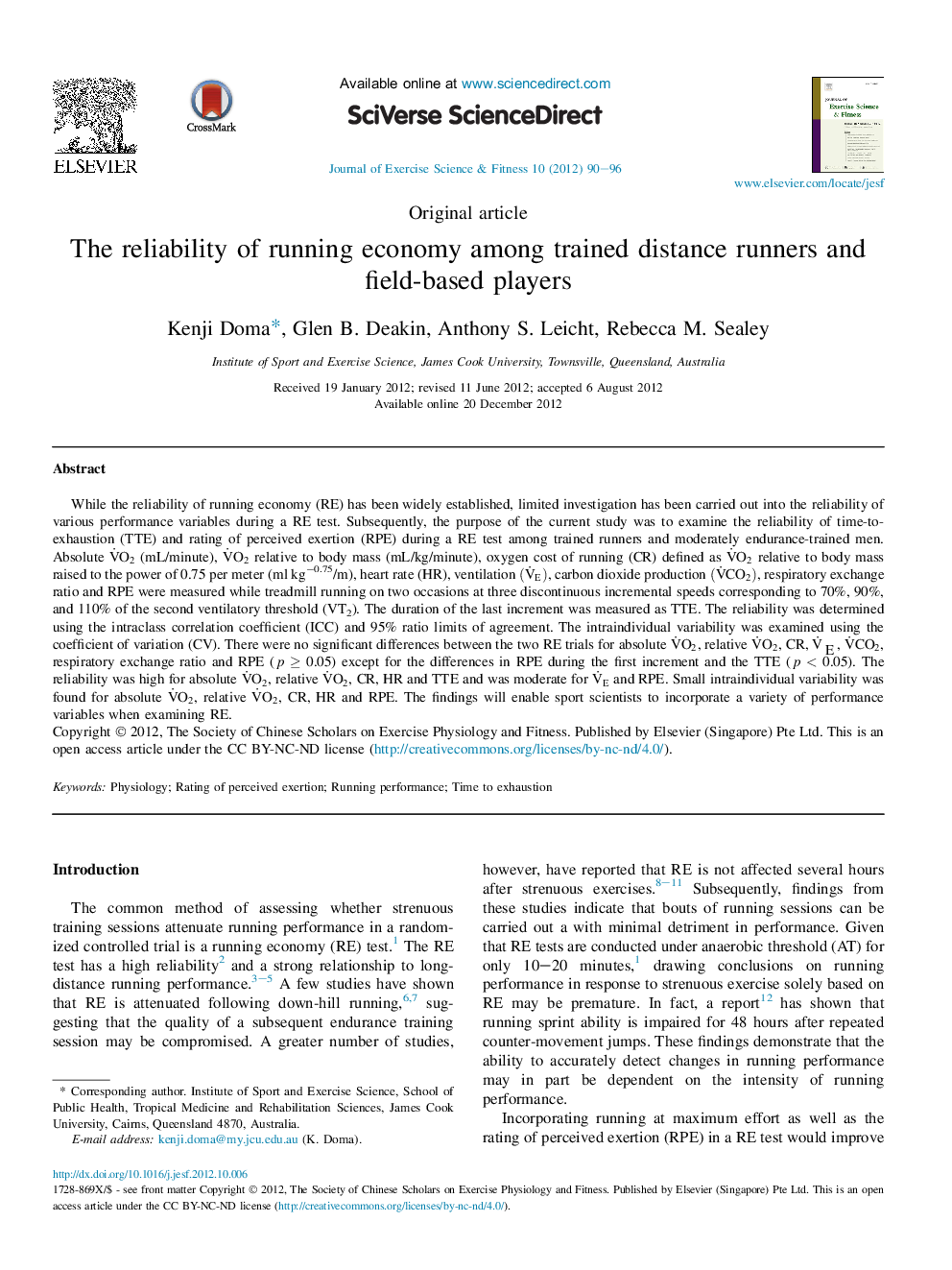| Article ID | Journal | Published Year | Pages | File Type |
|---|---|---|---|---|
| 2739646 | Journal of Exercise Science & Fitness | 2012 | 7 Pages |
While the reliability of running economy (RE) has been widely established, limited investigation has been carried out into the reliability of various performance variables during a RE test. Subsequently, the purpose of the current study was to examine the reliability of time-to-exhaustion (TTE) and rating of perceived exertion (RPE) during a RE test among trained runners and moderately endurance-trained men. Absolute V˙O2 (mL/minute), V˙O2 relative to body mass (mL/kg/minute), oxygen cost of running (CR) defined as V˙O2 relative to body mass raised to the power of 0.75 per meter (ml kg−0.75/m), heart rate (HR), ventilation (V˙E), carbon dioxide production (V˙CO2), respiratory exchange ratio and RPE were measured while treadmill running on two occasions at three discontinuous incremental speeds corresponding to 70%, 90%, and 110% of the second ventilatory threshold (VT2). The duration of the last increment was measured as TTE. The reliability was determined using the intraclass correlation coefficient (ICC) and 95% ratio limits of agreement. The intraindividual variability was examined using the coefficient of variation (CV). There were no significant differences between the two RE trials for absolute V˙O2, relative V˙O2, CR, V˙E, V˙CO2, respiratory exchange ratio and RPE (p ≥ 0.05) except for the differences in RPE during the first increment and the TTE (p < 0.05). The reliability was high for absolute V˙O2, relative V˙O2, CR, HR and TTE and was moderate for V˙E and RPE. Small intraindividual variability was found for absolute V˙O2, relative V˙O2, CR, HR and RPE. The findings will enable sport scientists to incorporate a variety of performance variables when examining RE.
